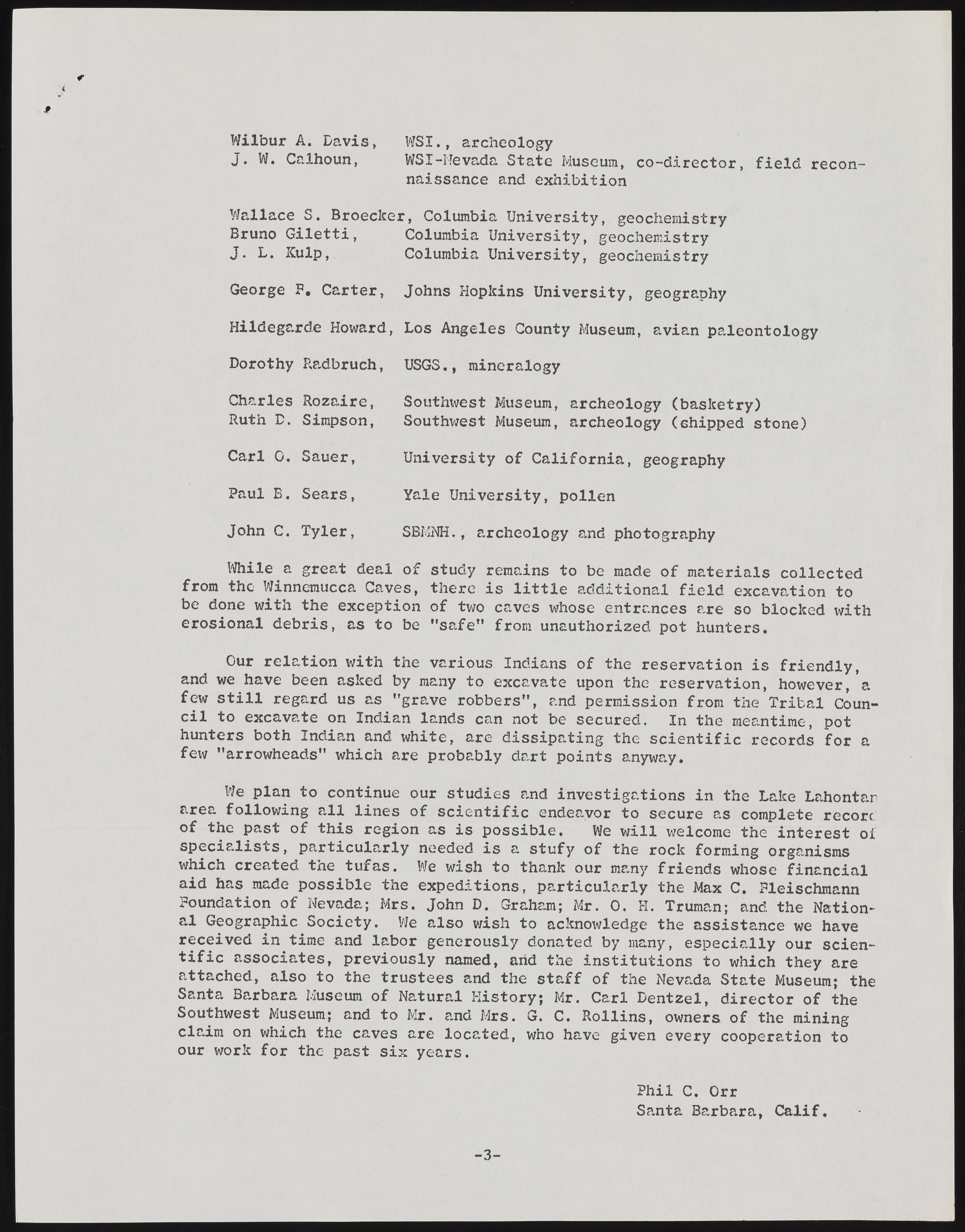Copyright & Fair-use Agreement
UNLV Special Collections provides copies of materials to facilitate private study, scholarship, or research. Material not in the public domain may be used according to fair use of copyrighted materials as defined by copyright law. Please cite us.
Please note that UNLV may not own the copyright to these materials and cannot provide permission to publish or distribute materials when UNLV is not the copyright holder. The user is solely responsible for determining the copyright status of materials and obtaining permission to use material from the copyright holder and for determining whether any permissions relating to any other rights are necessary for the intended use, and for obtaining all required permissions beyond that allowed by fair use.
Read more about our reproduction and use policy.
I agree.Information
Digital ID
Permalink
Details
Member of
More Info
Rights
Digital Provenance
Publisher
Transcription
i w ' Wilbur A. Davis, WSI., archeology J. W. Calhoun, WSI-Nevada State Museum, co-director, field reconnaissance and exhibition Wallace S. Broeclcer, Columbia University, geochemistry Bruno Giletti, Columbia University, geochemistry J. L. ICulp, Columbia University, geochemistry George F» Carter, Johns Hopkins University, geography Hildegarde Howard, Los Angeles County Museum, avian paleontology Dorothy Radbruch, USGS., mineralogy Charles Rozaire, Southwest Museum, archeology (basketry) Ruth D. Simpson, Southwest Museum, archeology (shipped stone) Carl 0 . Sauer, University of California, geography Paul B. Sears, Yale University, pollen John C. Tyler, SBMNH., archeology and photography While a great deal of study remains to be made of materials collected from the Winnemucca Caves, there is little additional field excavation to be done with the exception of two caves whose entrances are so blocked with erosional debris, as to be "safe" from unauthorized pot hunters. Our relation with the various Indians of the reservation is friendly, and we have been asked by many to excavate upon the reservation, however, a few still regard us as "grave robbers", and permission from the Tribal Council to excavate on Indian lands can not be secured. In the meantime, pot hunters both Indian and white, are dissipating the scientific records for a few "arrowheads" which are probably dart points anyway. We plan to continue our studies and investigations in the Lake Lahontar area following all lines of scientific endeavor to secure as complete record of the past of this region as is possible. We will welcome the interest of specialists, particularly needed is a stufy of the rock forming organisms which created tne tufas. We wish to thank our many friends whose financial aid has made possible the expeditions, particularly the Max C. Pleischmann Foundation of Nevada; Mrs. John D. Graham; Mr. 0. H. Truman; and the National Geographic Society. We also wish to acknowledge the assistance we have received in time and labor generously donated by many, especially our scientific associates, previously named, arid the institutions to which they are attached, also to the trustees and the staff of the Nevada State Museum; the Santa Barbara Museum of Natural History; Mr. Carl Dentzel, director of the Southwest Museum; and to Mr. and Mrs. G. C. Rollins, owners of the mining claim on which the caves are located, who have given every cooperation to our work for the past six years. Phil C. Orr Santa Barbara, Calif. - 3 -

